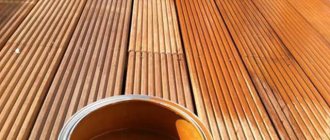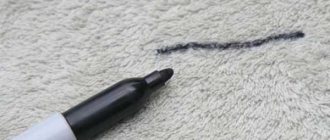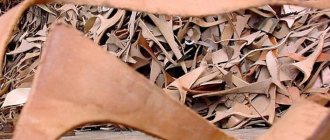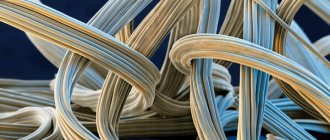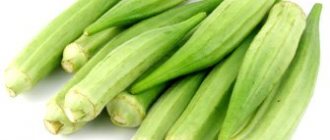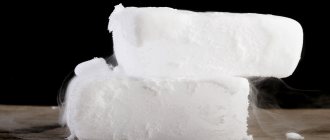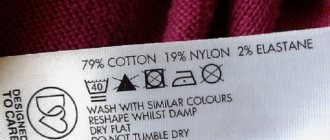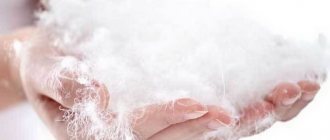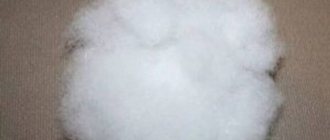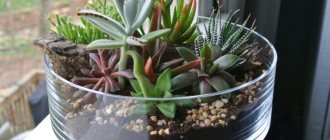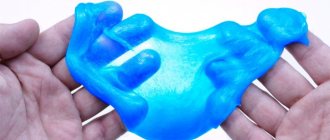The first material for the prototype of human clothing was animal skins. Since then, leather and fur have gone through an evolutionary technological path, but have not lost their relevance in many countries. The use of natural materials for northern peoples is not a tribute to fashion, but a vital necessity.
Due to limited resources and complex processing technology, the material is highly expensive. An alternative option is to create synthetic fabrics that are identical not only in appearance, but also in properties.
Description and composition
Artificial suede, or eco-suede, is a textile fabric that looks like natural suede. But the front surface of the textile has a short velvety pile, identical to its natural counterpart. The wrong side is a woven base or non-woven fabric.
Gallery of faux suede samples
The material is dense, soft, velvety, pleasant to the touch. It holds its shape well and, unlike natural suede, does not absorb moisture. It has high strength and resistance to mechanical stress. Ecosuede is difficult to tear or puncture. Demonstrates the ability to retain heat due to the texture of the fabric. A wide range of colors allows you to create beautiful fashionable items from textiles.
Expert opinion
Alyona
Fabric expert and technologist Alena Khlebnikova is ready to answer your questions.
Write me
Faux suede has elasticity. Resistant to deformation. When stretched, the fabric quickly returns to its original shape.
Woven-based materials use microfiber, which goes through a process of fluffing down to the smallest fibers. Woven fabrics made of cotton or a mixed composition are used as a base. The majority is polyester.
A short video about the advantages of eco-suede.
Especially useful for those who sew)
So, we see that Eco-suede is not “scary” at all , and although the prefix “eco” is now even applied to thermonuclear reactors, this wonderful material rightfully deserves it. And there are two reasons for this - not a single animal is killed and a person feels absolutely comfortable in it. As they say, the sheep are safe and the wolves are fed.) If at least one person, after reading this article, reconsiders their policy of purchasing suede products in favor of high-quality artificial ones, then I will consider my mission accomplished).
Author's text. Copying any elements of the article is possible only with an active link to the source!
Subtleties of production
The technology for producing the material consists of applying polyester fibers to a woven base using special equipment. Bonding of cotton and synthetic components occurs. At the final stage, the material is treated with a special compound to impart water-repellent properties.
The second manufacturing option is to apply the pile using the spraying method. This method allows you to obtain relief prints on the front surface. The base in this case is made from raw materials of chemical origin.
At the final stage, the textiles are polished. Teflon impregnations are used for strength and water resistance.
Among the simplest and most inexpensive production methods, noteworthy is the method of applying crushed viscose fibers using an electrostatic field. A layer of PVC resin is applied to a non-woven base (usually tarpaulin). Then, through exposure to an electrostatic field of high potentials, the villi are glued, which are then leveled. Excess viscose particles are combed out.
The surface is additionally fixed with adhesives, painted and dried. This type of eco-suede is the most affordable. But due to the polyvinyl chloride base, the fabric does not allow air to pass through, which reduces its hygienic properties. This type is used as upholstery and raw material for the manufacture of haberdashery goods, and less commonly for sewing outerwear.
What is ecosuede
Fabrics that imitate suede are widely used in many areas. They are used to make clothes, shoes, fashion accessories, furniture upholstery and more. Such products are characterized by a relatively affordable price, high wear resistance and durability, and ease of maintenance. Typically, the following production methods are used:
- The woven method is the most expensive, but in this case a more durable and high-quality result is obtained. The fabric is woven from microfiber threads and then processed with a special machine to split the threads into fibers;
- In the non-woven manufacturing method, the pile is glued onto a suitable base. This fabric is of lower quality, but can be used in everyday life.
Artificial materials are often impregnated with special compounds to protect the fabric from moisture and dirt.
Characteristics table
When buying things made from textiles of a chemical nature, for example, a dress made of artificial suede, it is important to know how the material will behave in use and whether it can provide comfort. To do this, it is worth evaluating not only the description of the fabric, but also its technical characteristics.
| Characteristics | Indicators |
| Raw material type | Synthetic |
| Composition of raw materials | Polyester, microfiber, in non-wovens - viscose, in some types stretch fibers are added (up to 7%) |
| Method of weaving threads | Application of synthetic fibers to the base |
| Water resistance | Average |
| Hygroscopicity,% | 1 — 6 |
| Breathability | Low |
| Vapor permeability | Optimal |
| Electrification | Weak |
| Strength, wear resistance | High |
| Resistance to deformation | Maximum |
| Extensibility | good |
| Wear resistance, Martindale test cycles (non-woven upholstery types) | Not less than 100,000 |
| Density, g/sq. m | 330 — 520 |
| Standard width of canvases, cm. | 145, 150 |
| Side | Right |
| Kinds | Woven, non-woven |
| Color options | Plain, plain-dyed canvases, wide color palette |
| Manufacturer | Korea, Italy, China |
| Standardization | GOST 56625-2015 |
| Price | Affordable, from 600 rubles/linear meter; upholstery – from 1800 rub/meter |
Show all properties
Dry cleaning
Following all the rules and recommendations, you can wash the following at home:
- any accessories,
- dresses,
- skirts,
- trousers.
It is better to dry-clean jackets, outerwear, and hats. It is very difficult to remove stains or dirt from them on your own.
There is a high probability of product deformation. In addition, it is almost impossible to properly dry and steam a suede coat at home .
The cost of dry cleaning will start from 500 rubles and can reach 2-3 thousand rubles.
Types of faux suede
Combining the qualities of velor and leather, artificial suede has found wide application. Thanks to the emergence of innovative technologies, new types of textiles are emerging, focused on the production of various products.
Furniture
Fully synthetic eco-suede is used as interior materials. The most striking representative of the line is the Italian-made Alcantara fabric. The material is used for the manufacture of drapes and curtains, and upholstery of upholstered furniture (chairs, sofas). Practical. The soft, stain-resistant fabric demonstrates high strength and durability. The production technology is patented by Alcantara SpA.
For clothes
Gallery of suede clothing products
Several types of this material are used in sewing various products. Suede on scuba - a two-layer fabric on a knitted base is used for the manufacture of thermal underwear, men's and women's clothing.
The piled polyester surface is bonded to a neoprene backing. This fabric is sometimes called diving chamois.
Double-sided knitted fabric is used in the clothing industry to create wardrobe items for children and adults. The textile composition includes elastane threads, which ensures a good fit.
Skirts, dresses of classic styles, raincoats, jackets, bombers, vests, jackets, hats and gloves are sewn from clothing types of fabric. Another popular option is suede with fur backing. An alternative to real fur. The fabric is used to make jackets, sheepskin coats, hats, and mittens.
Shoe
Popular suede shoes
A shoe substitute for natural suede is difficult to distinguish from the original one. Dense material that holds its shape well is used for sewing shoes. Shoes, boots, and boots are made from it. The products are affordable and easy to clean. Unlike its natural counterpart, there are no traces of water or snow left on artificial shoes. Caring for such products is easy. The main rule is that you should not dry near heating appliances; otherwise the adhesive layer will be damaged.
Automotive
To clean the interior and polish the car body, wipes made of perforated velor, a subtype of ecosuede, are used. They ensure that there are no divorces. They are used in car wash salons.
Alcantara fabric is used in the production of seat covers. Artificial suede is also used for upholstery. For the ceiling cladding, foam rubber material is used to provide sound insulation.
Haberdashery
Leather goods have always been highly expensive. An alternative option for the manufacture of this group of products is eco-suede on a non-woven base. The material is used to sew gloves, mittens, bags, backpacks, clutches, purses, belts and belts.
